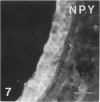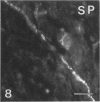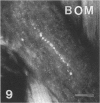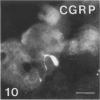Abstract
Immunohistochemical methods were used to study the developing peptidergic innervation of the human fetal prostate gland in a series of specimens ranging in gestational age from 13 to 30 wk. The overall innervation of each specimen was visualised using protein gene product 9.5 (PGP), a general nerve marker. The onset and development of specific neuropeptide-containing subpopulations were investigated using antisera to neuropeptide Y (NPY), vasoactive intestinal peptide (VIP), substance P (SP), calcitonin gene-related peptide (CGRP), bombesin (BOM), somatostatin (SOM), leu-enkephalin (l-ENK) and met-enkephalin (m-ENK). In addition the occurrence and distribution of presumptive noradrenergic nerves was studied using antisera to dopamine-beta-hydroxylase (D beta H) and tyrosine hydroxylase (TH). At 13 wk numerous branching PGP-immunoreactive (-IR) nerves were observed in the capsule of the developing prostate gland and surrounding the preprostatic urethra but the remainder of the gland was devoid of nerves. The majority of nerves in the capsule contained D beta H and TH and were presumed to be noradrenergic in type while other nerves (in decreasing numbers) contained NPY, l-ENK, SP and CGRP. Nerves associated with the preprostatic urethra did not contain any of the neuropeptides under investigation. At 17 wk the density of nerves in the capsule had increased and occasional m-ENK-, VIP- and BOM-IR nerve fibres were also observed. In addition PGP, D beta H-, TH-, NPY- and l-ENK-IR nerves occurred in association with smooth muscle bundles which at 17 wk were present in the outer part of the gland. Occasional PGP-IR nerves were also present at the base of the epithelium forming some of the prostatic glands. At 23 wk some of the subepithelial nerves showed immunoreactivity for NPY, VIP or l-ENK. At 26 wk smooth muscle bundles occurred throughout the gland and were richly innervated by PGP, D beta H and TH-IR nerves while a less dense plexus was formed by NPY- and l-ENK-IR nerves together with a few m-ENK-IR nerves. Occasional smooth muscle-associated varicose nerve fibres showed immunoreactivity for SP, CGRP, VIP or BOM although the majority of these types of nerve formed perivascular plexuses. Also at 26 wk numerous varicose nerve fibres were observed in association with the prostatic acini, the majority of such nerves containing NPY with a few showing immunoreactivity to VIP, l-ENK, SP or CGRP.(ABSTRACT TRUNCATED AT 400 WORDS)
Full text
PDF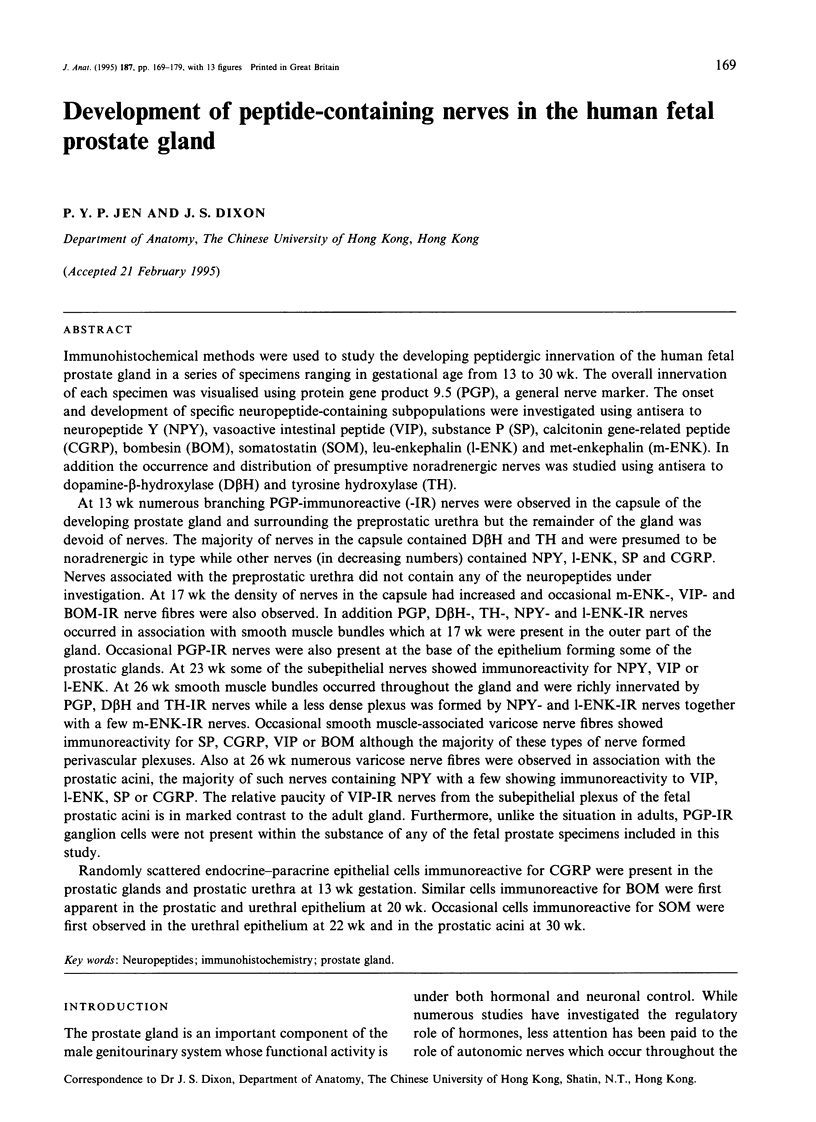
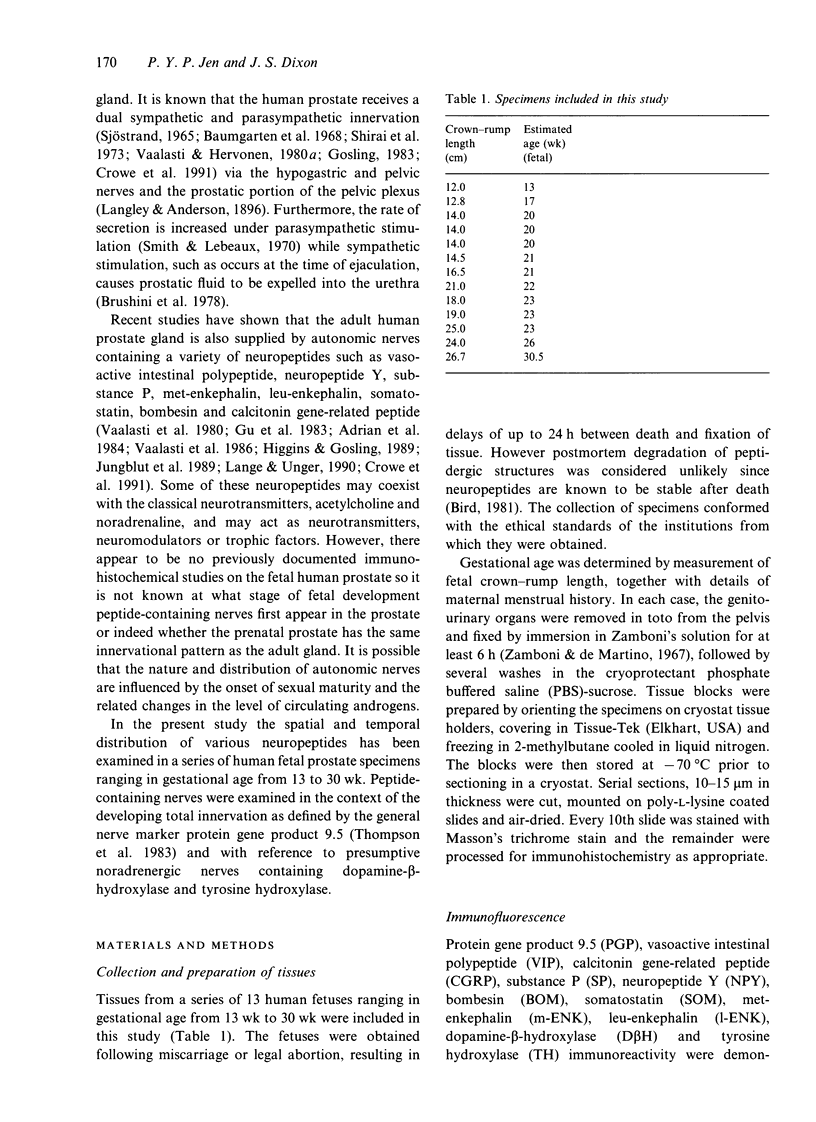
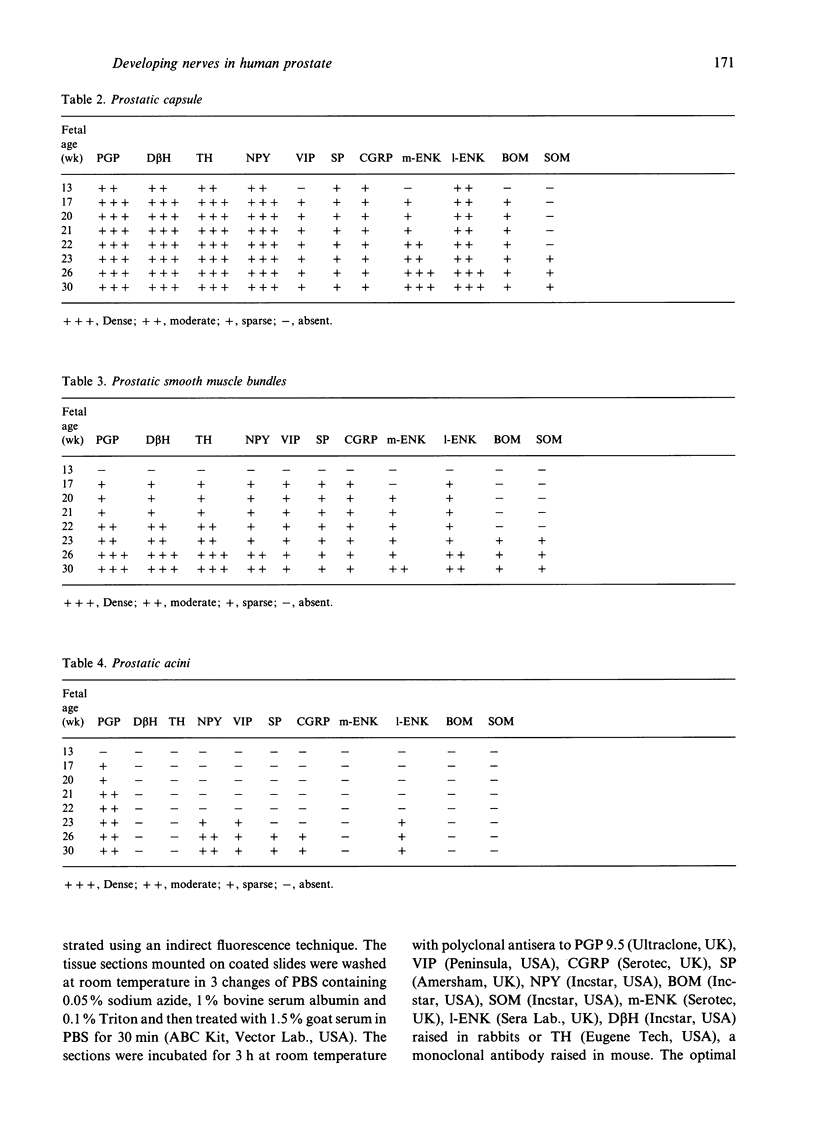
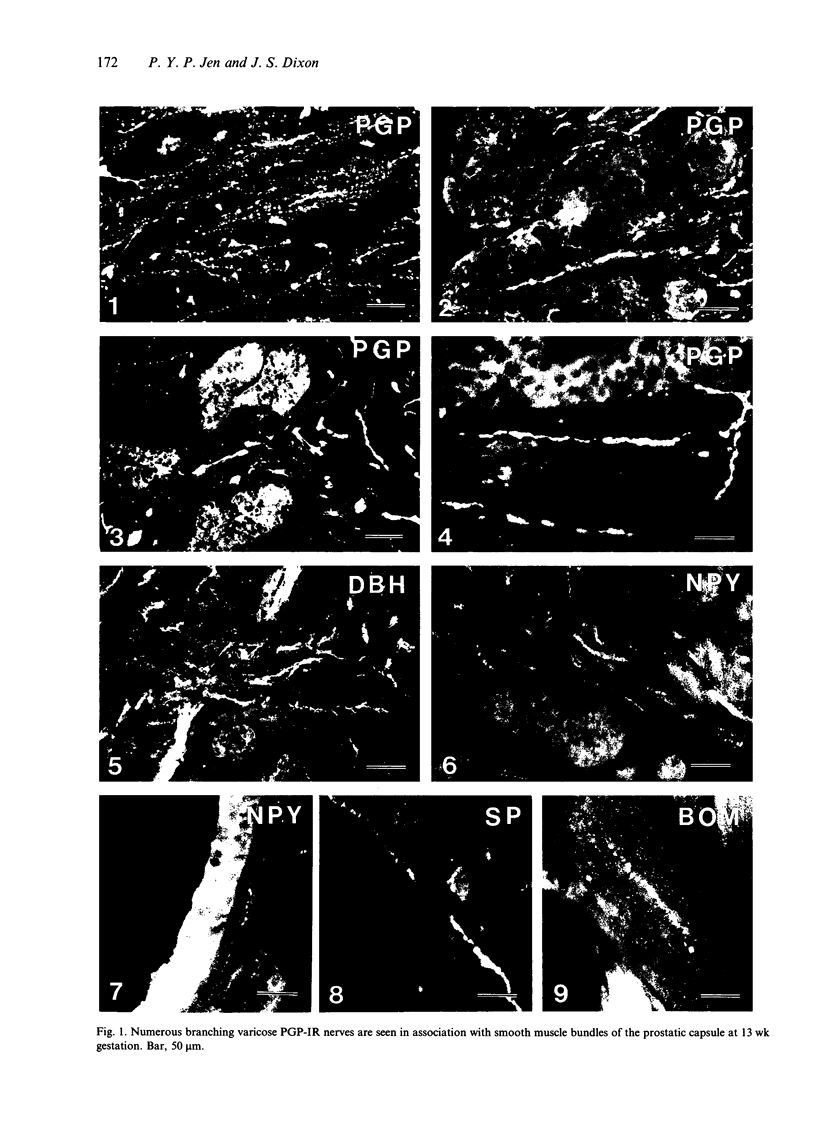
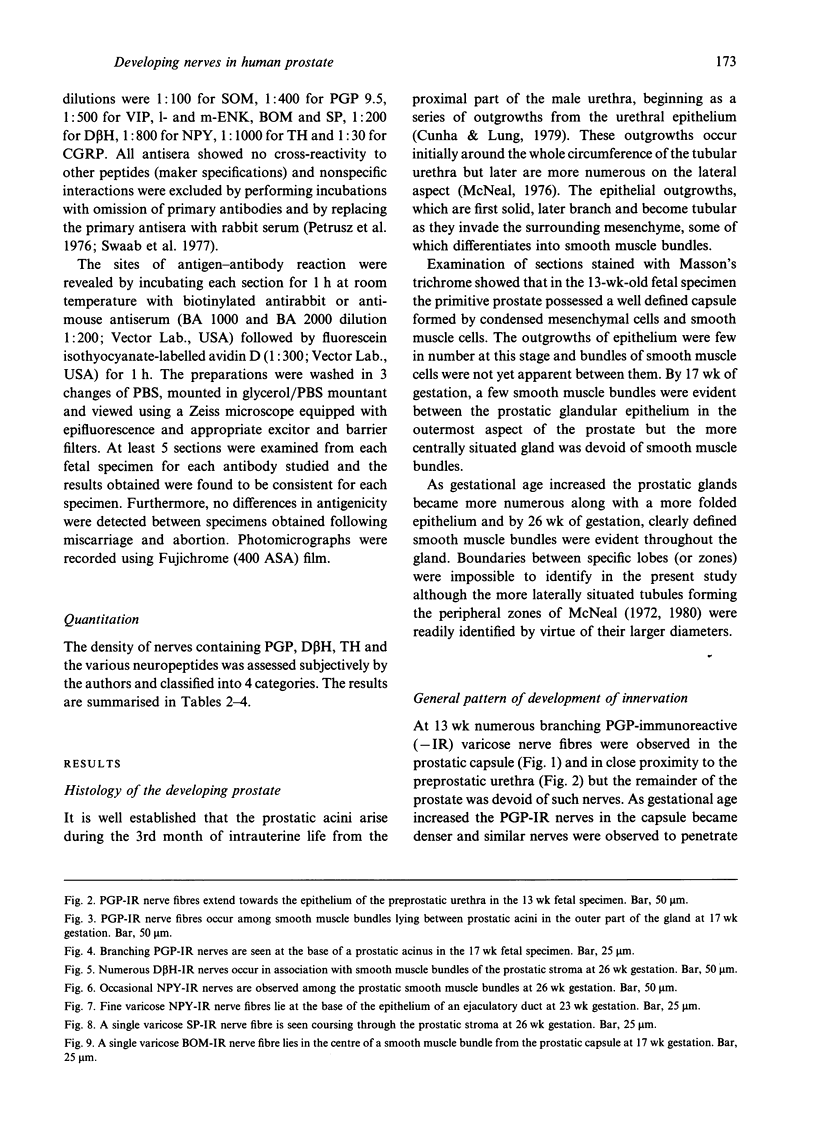
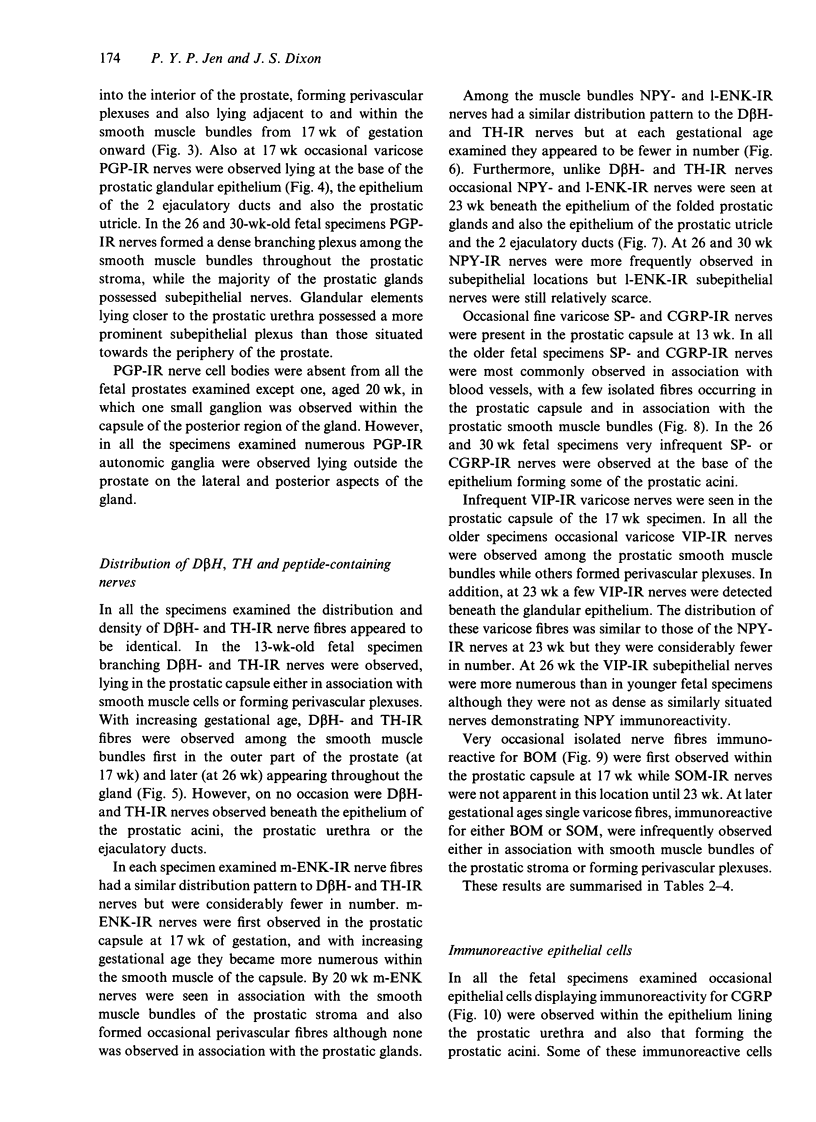
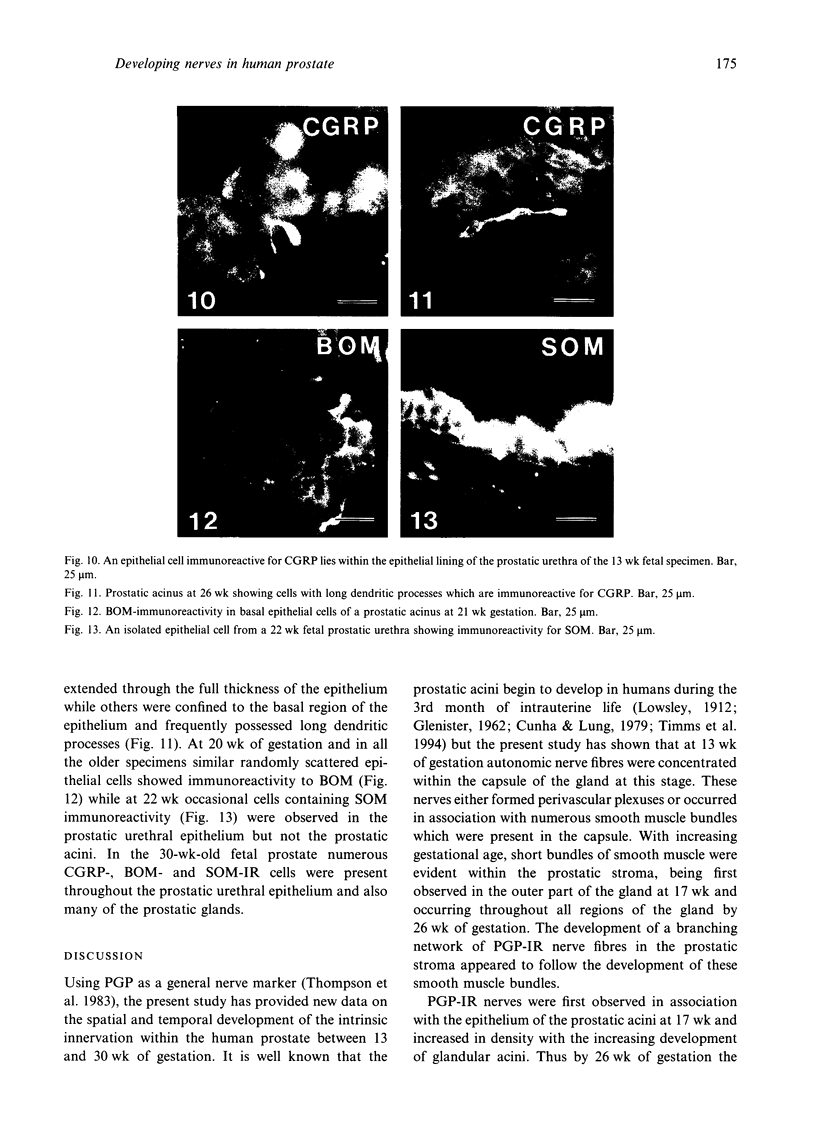
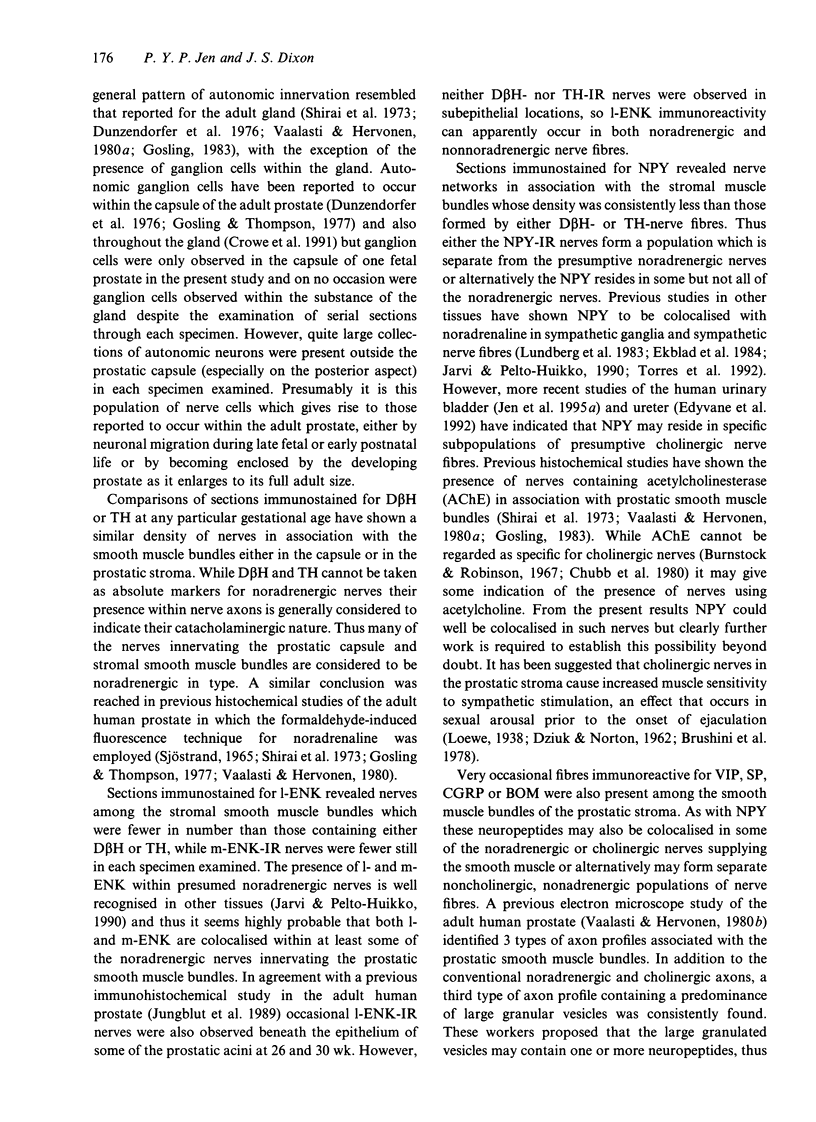
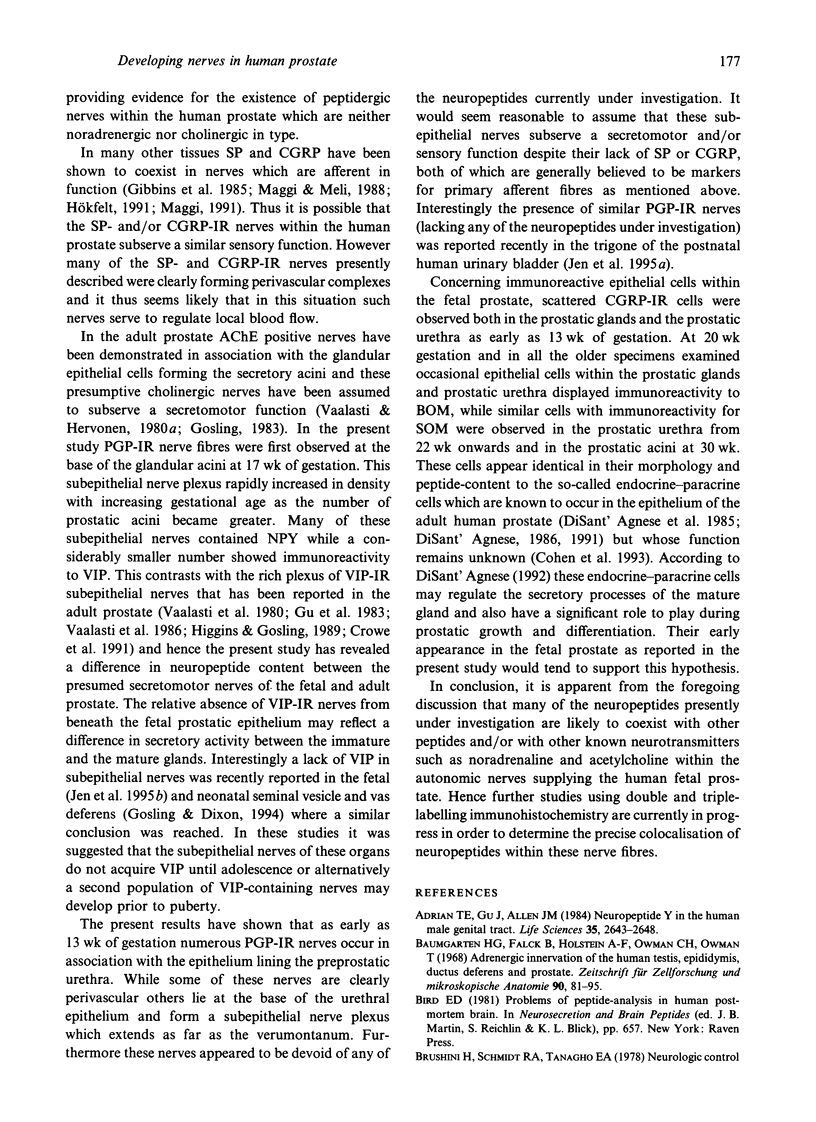
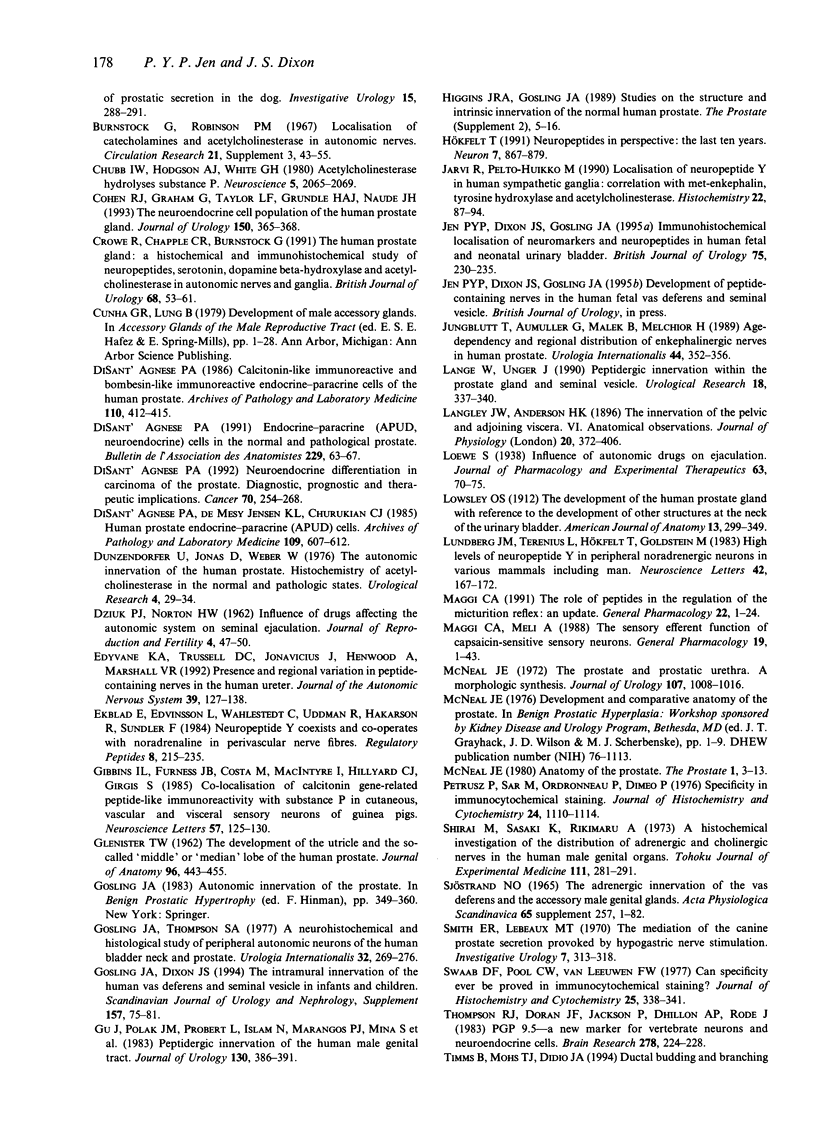
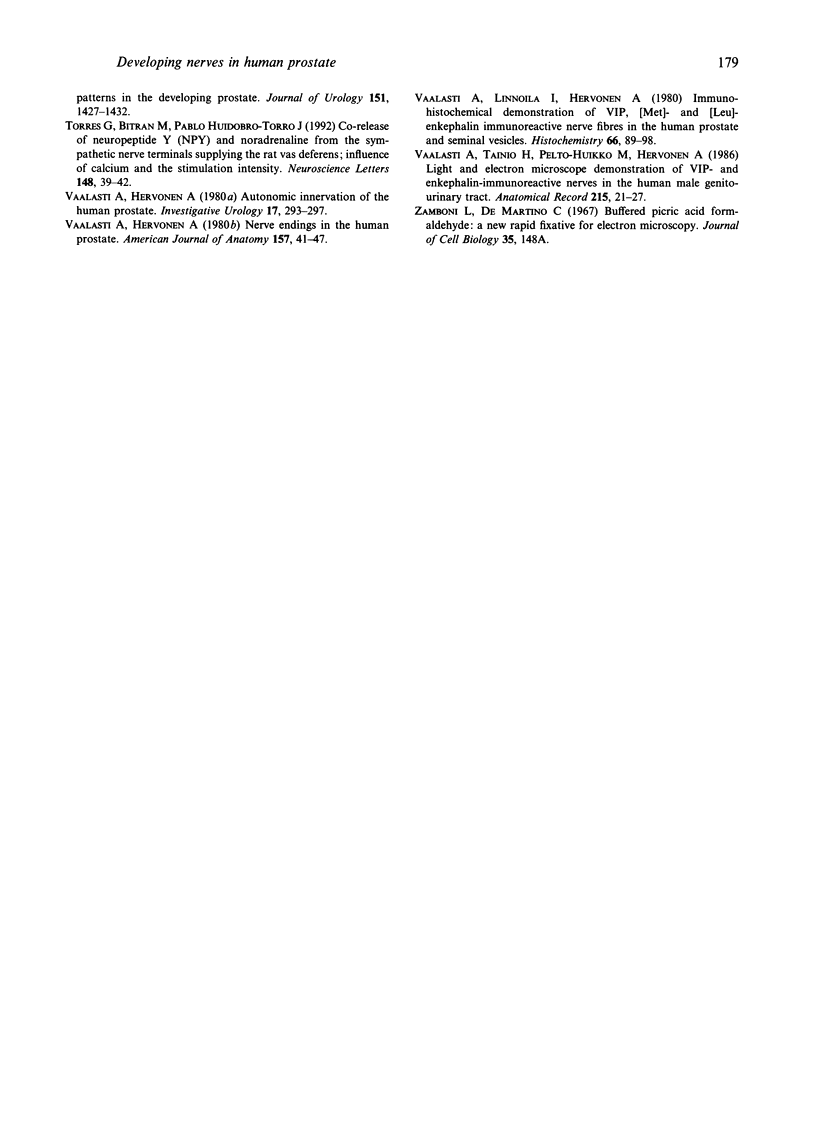
Images in this article
Selected References
These references are in PubMed. This may not be the complete list of references from this article.
- Adrian T. E., Gu J., Allen J. M., Tatemoto K., Polak J. M., Bloom S. R. Neuropeptide Y in the human male genital tract. Life Sci. 1984 Dec 24;35(26):2643–2648. doi: 10.1016/0024-3205(84)90033-x. [DOI] [PubMed] [Google Scholar]
- Baumgarten H. G., Falck B., Holstein A. F., Owman C., Owman T. Adrenergic innervation of the human testis, epididymis, ductus deferens and prostate: a fluorescence microscopic and fluorimetric study. Z Zellforsch Mikrosk Anat. 1968;90(1):81–95. doi: 10.1007/BF00496704. [DOI] [PubMed] [Google Scholar]
- Bruschini H., Schmidt R. A., Tanagho E. A. Neurologic control of prostatic secretion in the dog. Invest Urol. 1978 Jan;15(4):288–290. [PubMed] [Google Scholar]
- Chubb I. W., Hodgson A. J., White G. H. Acetylcholinesterase hydrolyzes substance P. Neuroscience. 1980;5(12):2065–2072. doi: 10.1016/0306-4522(80)90124-4. [DOI] [PubMed] [Google Scholar]
- Cohen R. J., Glezerson G., Taylor L. F., Grundle H. A., Naudé J. H. The neuroendocrine cell population of the human prostate gland. J Urol. 1993 Aug;150(2 Pt 1):365–368. doi: 10.1016/s0022-5347(17)35484-8. [DOI] [PubMed] [Google Scholar]
- Crowe R., Chapple C. R., Burnstock G. The human prostate gland: a histochemical and immunohistochemical study of neuropeptides, serotonin, dopamine beta-hydroxylase and acetylcholinesterase in autonomic nerves and ganglia. Br J Urol. 1991 Jul;68(1):53–61. doi: 10.1111/j.1464-410x.1991.tb15257.x. [DOI] [PubMed] [Google Scholar]
- DZIUK P. J., NORTON H. W. Influence of drugs affecting the autonomic system on seminal ejaculation. J Reprod Fertil. 1962 Aug;4:47–50. doi: 10.1530/jrf.0.0040047. [DOI] [PubMed] [Google Scholar]
- Dunzendorfer U., Jonas D., Weber W. The autonomic innervation of the human prostate. Histochemistry of acetylcholinesterase in the normal and pathologic states. Urol Res. 1976 Apr 21;4(1):29–31. doi: 10.1007/BF00256133. [DOI] [PubMed] [Google Scholar]
- Edyvane K. A., Trussell D. C., Jonavicius J., Henwood A., Marshall V. R. Presence and regional variation in peptide-containing nerves in the human ureter. J Auton Nerv Syst. 1992 Jun 15;39(2):127–137. doi: 10.1016/0165-1838(92)90053-j. [DOI] [PubMed] [Google Scholar]
- Ekblad E., Edvinsson L., Wahlestedt C., Uddman R., Håkanson R., Sundler F. Neuropeptide Y co-exists and co-operates with noradrenaline in perivascular nerve fibers. Regul Pept. 1984 Apr;8(3):225–235. doi: 10.1016/0167-0115(84)90064-8. [DOI] [PubMed] [Google Scholar]
- GLENISTER T. W. The development of the utricle and of the so-called 'middle' or 'median' lobe of the human prostate. J Anat. 1962 Oct;96:443–455. [PMC free article] [PubMed] [Google Scholar]
- Gibbins I. L., Furness J. B., Costa M., MacIntyre I., Hillyard C. J., Girgis S. Co-localization of calcitonin gene-related peptide-like immunoreactivity with substance P in cutaneous, vascular and visceral sensory neurons of guinea pigs. Neurosci Lett. 1985 Jun 12;57(2):125–130. doi: 10.1016/0304-3940(85)90050-3. [DOI] [PubMed] [Google Scholar]
- Gosling J. A., Dixon J. S. The intramural innervation of the human vas deferens and seminal vesicle in infants and children. Scand J Urol Nephrol Suppl. 1994;157:75–81. [PubMed] [Google Scholar]
- Gosling J. A., Thompson S. A. A neurohistochemical and histological study of peripheral autonomic neurons of the human bladder neck and prostate. Urol Int. 1977;32(4):269–276. doi: 10.1159/000280142. [DOI] [PubMed] [Google Scholar]
- Gu J., Polak J. M., Probert L., Islam K. N., Marangos P. J., Mina S., Adrian T. E., McGregor G. P., O'Shaughnessy D. J., Bloom S. R. Peptidergic innervation of the human male genital tract. J Urol. 1983 Aug;130(2):386–391. doi: 10.1016/s0022-5347(17)51174-x. [DOI] [PubMed] [Google Scholar]
- Higgins J. R., Gosling J. A. Studies on the structure and intrinsic innervation of the normal human prostate. Prostate Suppl. 1989;2:5–16. doi: 10.1002/pros.2990150503. [DOI] [PubMed] [Google Scholar]
- Hökfelt T. Neuropeptides in perspective: the last ten years. Neuron. 1991 Dec;7(6):867–879. doi: 10.1016/0896-6273(91)90333-u. [DOI] [PubMed] [Google Scholar]
- Jen P. Y., Dixon J. S., Gosling J. A. Immunohistochemical localization of neuromarkers and neuropeptides in human fetal and neonatal urinary bladder. Br J Urol. 1995 Feb;75(2):230–235. doi: 10.1111/j.1464-410x.1995.tb07317.x. [DOI] [PubMed] [Google Scholar]
- Jungblut T., Aumüller G., Malek B., Melchior H. Age-dependency and regional distribution of enkephalinergic nerves in human prostate. Urol Int. 1989;44(6):352–356. doi: 10.1159/000281539. [DOI] [PubMed] [Google Scholar]
- Järvi R., Pelto-Huikko M. Localization of neuropeptide Y in human sympathetic ganglia: correlation with met-enkephalin, tyrosine hydroxylase and acetylcholinesterase. Histochem J. 1990 Feb;22(2):87–94. doi: 10.1007/BF01885786. [DOI] [PubMed] [Google Scholar]
- Lange W., Unger J. Peptidergic innervation within the prostate gland and seminal vesicle. Urol Res. 1990;18(5):337–340. doi: 10.1007/BF00300783. [DOI] [PubMed] [Google Scholar]
- Langley J. N., Anderson H. K. The Innervation of the Pelvic and adjoining Viscera: Part VII. Anatomical Observations. J Physiol. 1896 Oct 19;20(4-5):372–406. doi: 10.1113/jphysiol.1896.sp000629. [DOI] [PMC free article] [PubMed] [Google Scholar]
- Lundberg J. M., Terenius L., Hökfelt T., Goldstein M. High levels of neuropeptide Y in peripheral noradrenergic neurons in various mammals including man. Neurosci Lett. 1983 Dec 2;42(2):167–172. doi: 10.1016/0304-3940(83)90401-9. [DOI] [PubMed] [Google Scholar]
- Maggi C. A., Meli A. The sensory-efferent function of capsaicin-sensitive sensory neurons. Gen Pharmacol. 1988;19(1):1–43. doi: 10.1016/0306-3623(88)90002-x. [DOI] [PubMed] [Google Scholar]
- Maggi C. A. The role of peptides in the regulation of the micturition reflex: an update. Gen Pharmacol. 1991;22(1):1–24. doi: 10.1016/0306-3623(91)90304-o. [DOI] [PubMed] [Google Scholar]
- McNeal J. E. Anatomy of the prostate: an historical survey of divergent views. Prostate. 1980;1(1):3–13. doi: 10.1002/pros.2990010103. [DOI] [PubMed] [Google Scholar]
- McNeal J. E. The prostate and prostatic urethra: a morphologic synthesis. J Urol. 1972 Jun;107(6):1008–1016. doi: 10.1016/s0022-5347(17)61195-9. [DOI] [PubMed] [Google Scholar]
- Petrusz P., Sar M., Ordronneau P., DiMeo P. Specificity in immunocytochemical staining. J Histochem Cytochem. 1976 Oct;24(10):1110–1112. doi: 10.1177/24.10.789759. [DOI] [PubMed] [Google Scholar]
- Shirai M., Sasaki K., Rikimaru A. A histochemical investigation of the distribution of adrenergic and cholinergic nerves in the human male genital organs. Tohoku J Exp Med. 1973 Nov;111(3):281–291. doi: 10.1620/tjem.111.281. [DOI] [PubMed] [Google Scholar]
- Smith E. R., Lebeaux M. I. The mediation of the canine prostatic secretion provoked by hypogastric nerve stimulation. Invest Urol. 1970 Jan;7(4):313–318. [PubMed] [Google Scholar]
- Thompson R. J., Doran J. F., Jackson P., Dhillon A. P., Rode J. PGP 9.5--a new marker for vertebrate neurons and neuroendocrine cells. Brain Res. 1983 Nov 14;278(1-2):224–228. doi: 10.1016/0006-8993(83)90241-x. [DOI] [PubMed] [Google Scholar]
- Timms B. G., Mohs T. J., Didio L. J. Ductal budding and branching patterns in the developing prostate. J Urol. 1994 May;151(5):1427–1432. doi: 10.1016/s0022-5347(17)35273-4. [DOI] [PubMed] [Google Scholar]
- Torres G., Bitran M., Huidobro-Toro J. P. Co-release of neuropeptide Y (NPY) and noradrenaline from the sympathetic nerve terminals supplying the rat vas deferens; influence of calcium and the stimulation intensity. Neurosci Lett. 1992 Dec 14;148(1-2):39–42. doi: 10.1016/0304-3940(92)90799-d. [DOI] [PubMed] [Google Scholar]
- Vaalasti A., Hervonen A. Autonomic innervation of the human prostate. Invest Urol. 1980 Jan;17(4):293–297. [PubMed] [Google Scholar]
- Vaalasti A., Hervonen A. Nerve endings in the human prostate. Am J Anat. 1980 Jan;157(1):41–47. doi: 10.1002/aja.1001570105. [DOI] [PubMed] [Google Scholar]
- Vaalasti A., Linnoila I., Hervonen A. Immunohistochemical demonstration of VIP, [Met5]-and [Leu5]-enkephalin immunoreactive nerve fibres in the human prostate and seminal vesicles. Histochemistry. 1980;66(1):89–98. doi: 10.1007/BF00493249. [DOI] [PubMed] [Google Scholar]
- Vaalasti A., Tainio H., Pelto-Huikko M., Hervonen A. Light and electron microscope demonstration of VIP- and enkephalin-immunoreactive nerves in the human male genitourinary tract. Anat Rec. 1986 May;215(1):21–27. doi: 10.1002/ar.1092150104. [DOI] [PubMed] [Google Scholar]
- di Sant'Agnese P. A., de Mesy Jensen K. L., Churukian C. J., Agarwal M. M. Human prostatic endocrine-paracrine (APUD) cells. Distributional analysis with a comparison of serotonin and neuron-specific enolase immunoreactivity and silver stains. Arch Pathol Lab Med. 1985 Jul;109(7):607–612. [PubMed] [Google Scholar]









